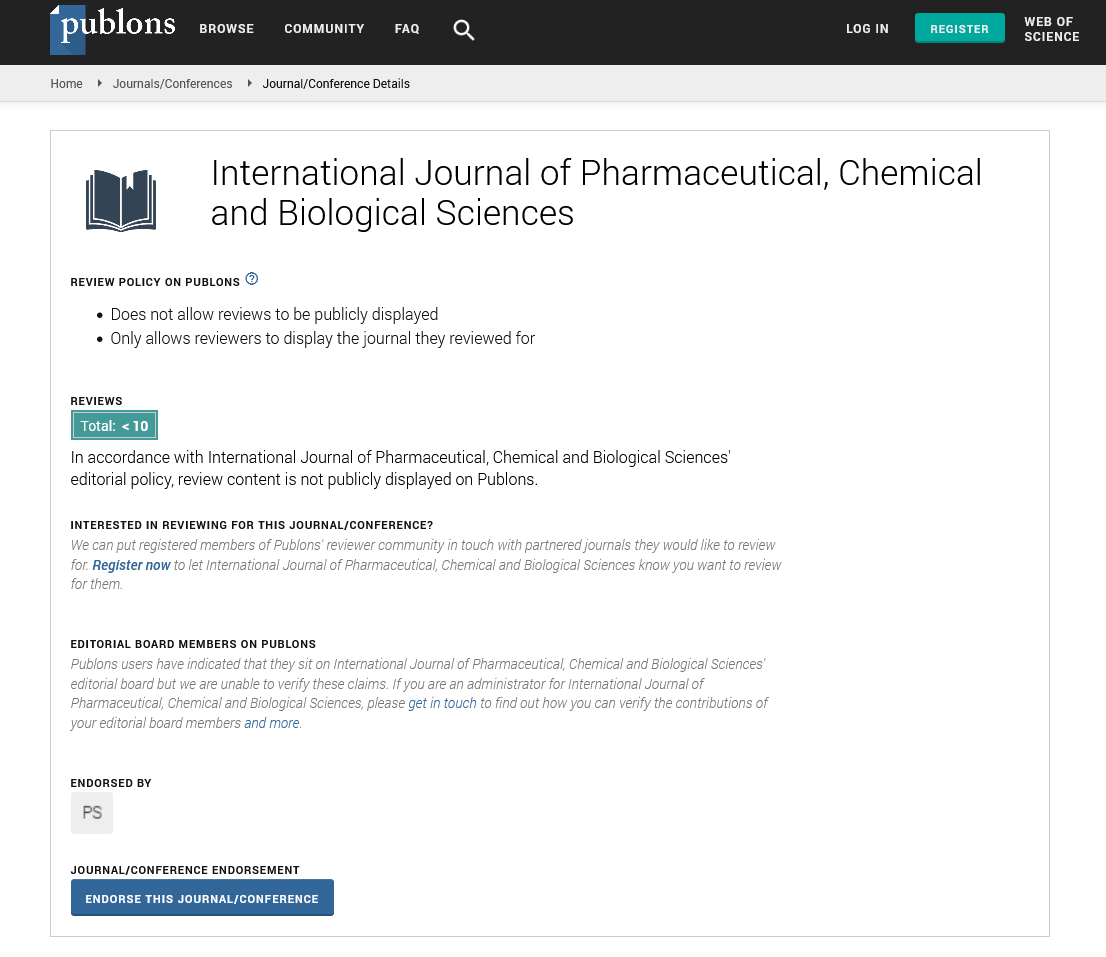Commentary - International Journal of Pharmaceutical, Chemical and Biological Sciences ( 2023) Volume 13, Issue 3
Surface Chemistry: The Dance of Molecules at Interfaces
Kakashi Lee*Kakashi Lee, Department of Chemical Engineering and Pharmaceutics, Henan University of Science and Technology, China,
Received: 30-Aug-2023, Manuscript No. ijpcbs-23-113680; Editor assigned: 01-Sep-2023, Pre QC No. ijpcbs-23-113680 (PQ); Reviewed: 15-Sep-2023, QC No. ijpcbs-23-113680; Revised: 20-Sep-2023, Manuscript No. ijpcbs-23-113680 (R); Published: 27-Sep-2023, DOI: DOI: 10.36648/2471-9668-13.3.5
Description
Surface chemistry is the branch of chemistry that delves into the world of molecules at interfaces, where the boundary between two phases-typically a solid and liquid, or gas and another substance, gives rise to unique chemical behavior. These interfaces are omnipresent in our daily lives, from the soapy bubbles in our baths to the catalytic converters in our cars. In this article, we will embark on a journey into the captivating realm of surface chemistry, exploring its foundational principles, applications in various industries, environmental significance, and the frontiers of research that promise to reshape our understanding of matter at the nanoscale. In surface chemistry, a ‘surface’ refers to the boundary between a bulk phase and another phase, such as gas or liquid. An ‘interface’ refers to the boundary between two immiscible substances, such as oil and water. At the heart of surface chemistry lies the phenomenon of adsorption, where molecules or ions from the surrounding environment adhere to the surface of a solid or liquid. This can be physical or chemical adsorption, depending on the strength of the interactions. Every substance has a characteristic surface energy, which influences its wetting behavior and interactions with other materials. High surface energy materials tend to be more hydrophilic (water- attracting), while low surface energy materials are more hydrophobic (water-repelling). Surface tension is the property of a liquid that causes it to resist an external force, effectively minimizing its surface area. This property plays a crucial role in the formation of drops, bubbles, and the capillary rise of liquids in thin tubes. Capillary action occurs when a liquid rises or falls in a narrow tube due to the combination of adhesive and cohesive forces. It’s responsible for phenomena like the wicking of water into a paper towel. Colloidal systems are those in which particles are dispersed in a continuous phase, forming a stable suspension. Colloids are integral to various industries, from food and cosmetics to pharmaceuticals. Surface-active agents, or surfactants, are compounds that can reduce surface tension and are essential in processes like emulsification, where oil and water are mixed. Heterogeneous catalysis is a critical application of surface chemistry. In this process, reactants adsorb onto the surface of a catalyst, where chemical reactions occur more readily, leading to increased reaction rates. Catalytic converters in automobiles are a prime example of how surface chemistry can mitigate environmental pollution. The study of electrochemical cells often involves the interaction between electrodes and electrolytes at solid-liquid interfaces. Surface chemistry plays a pivotal role in the design of efficient batteries and fuel cells. Surface chemistry also comes into play when studying the corrosion of metals, as it involves reactions at the metal-air or metal-liquid interfaces. Surface chemistry plays a vital role in water treatment processes, such as coagulation and flocculation, which remove impurities and pathogens from drinking water. The cleanup of oil spills in aquatic environments relies on the adsorption of oil molecules onto surfaces, such as sorbent materials. At the nanoscale, surface chemistry takes on new dimensions. Nanoparticles exhibit unique properties due to their high surface-to-volume ratios, making them invaluable in various fields, including medicine, electronics, and materials science.
Acknowledgement
None.
Conflict Of Interest
None.

